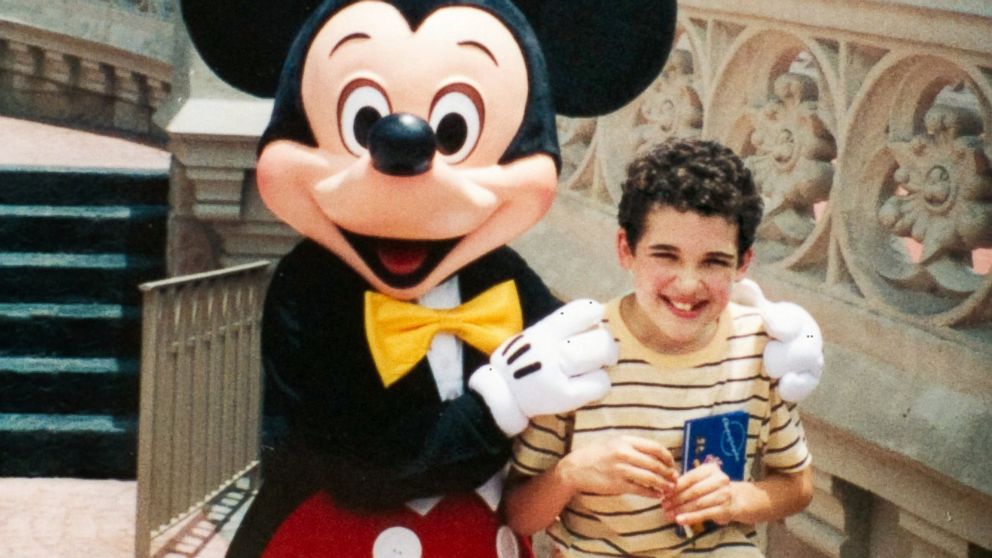Disney Characters Help Autistic Child Emerge From Lonely Autism
March 11, 2014— -- Owen Suskind was a talkative and lively child until the age of 3, when all that he had learned -- speaking, eating and walking -- began to slip away from him and he retreated into the lonely world of autism.
Over time, Owen became lost in a library of animated Disney movies, rewinding and replaying them, and his parents, journalists Ron and Cornelia Suskind, worried about their son being sucked into the social isolation of the television.
"They vanish in front of you," Owen's father, Pulitzer-winning journalist Ron Suskind told ABC News.com, which is owned by the Walt Disney Company.
But it was the Disney characters, whose lines and songs Owen could repeat back with ease, that ultimately gave his parents the entryway to his hidden thoughts and emotions and brought him back into the world, he said.
Suskind says that he and his wife were convinced it wasn't "mimicry," because "the movements, the tone, the emotions seem utterly authentic, like method acting."
Now, Suskind writes about his 20-year journey raising Owen in a March 9 New York Times Magazine article, "Reaching My Autistic Son Through Disney." The piece is part of a larger book on the so-called "Disney therapy" that the author writes about in his 2014 book, "Life Animated."
It was the "sidekick" characters, in particular, that touched an emotional spot in Owen and allowed him to express himself. And even though, he couldn't write his name legibly, Owen could flawlessly draw characters like the Mad Hatter and Jiminy Cricket.
"It's often the supporting players in Disney fables who are more varied and vivid," Suskind writes. "Even in the earliest Disney movies, the first sidekicks -- Goofy, Pluto and then Donald Duck -- often carried confusions, frailties, foolishness, pride, vanity and hard-won, often reluctantly learned, insights. The spectrum of complex human emotions is housed with the sidekicks."
When Owen was about 6, Suskind described how he grabbed a puppet of Iago, the parrot from "Aladdin," to have one of the first real conversations with his son: "So, Owen, how ya doin'?"
"I am not happy," Owen replied. "I don't have friends. I can't understand what people say."
Using the Disney characters to reach out to their son was like "reversing the telescope," Suskind said. "We really need to embrace the affinity and go the other direction. Let me in with a kind of delicacy.
"What is the subtle substructure of the affinity so I can enter it and get in there and take the therapy to start to reveal to me some maps and navigation to look in their underground cabin?" he said. "I can help them rebuild it and they can advance into the world of sunlight."
Autism affects an estimated 1 in 88 children, about 1 percent of the population ages 3 to 17, according to the Autism Society. A total of 1 to 1.5 million Americans is living with an autism spectrum disorder, one of the fastest growing developmental disabilities.
Owen was diagnosed with regressive autism, which was categorized in the DSM-4 as autism disintegration disorder. Today, the DMS-5 uses the umbrella term, autism spectrum disorder.
"Those kids at age 2 to 2 1/2 hit all the normal development milestones and, not like a light switch, but over time, didn't use their language and had behavior problems," said Jim Ball, chairman of the Autism Society executive board.
The Suskinds' success is not unusual, according to Ball.
"If you talk to parents and look at anecdotal research, these kids start talking with Thomas the Tank Engine and Disney videos," Ball said. "They start to script or say back exactly what they see and seem motivated by it.
"It's not particular to Disney, but lots of kids love Disney," he said. "A lot of them love computer-aided devices and video modeling. They hit a certain icon and that Disney character you see every single time. They can predict it when a lot of life is unpredictable. They love the structure and those things free them up to be less inhibited and to use language more."




